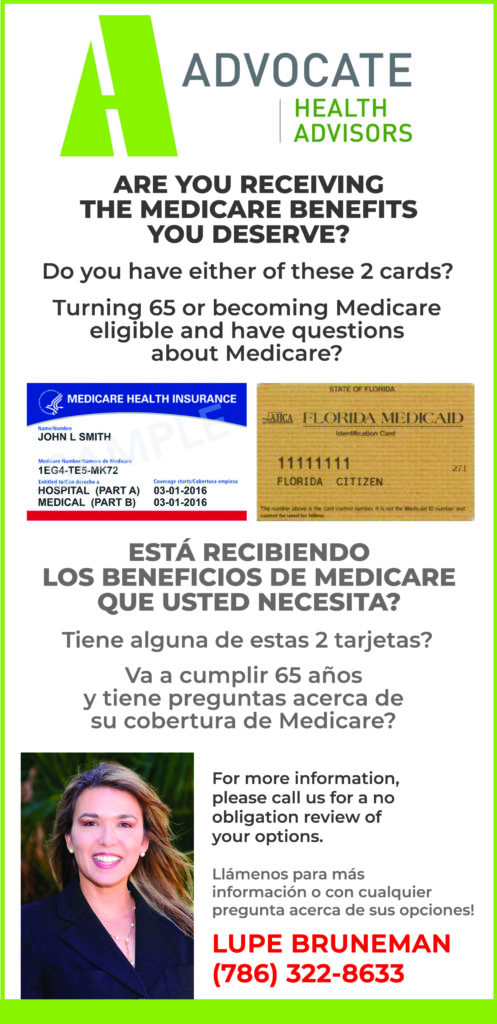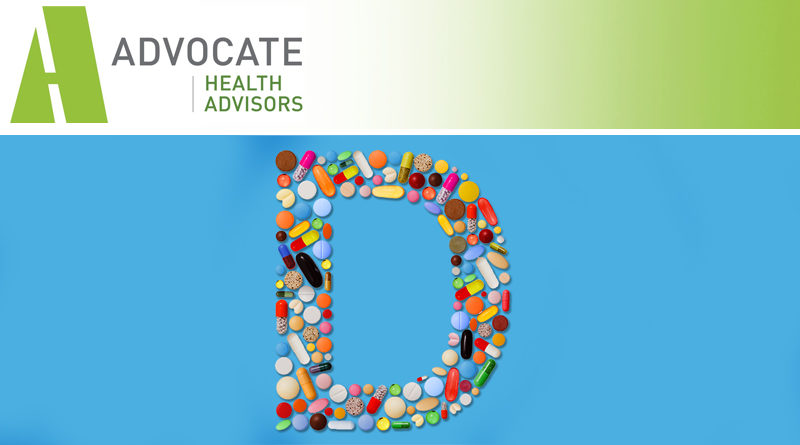Is All Medicare Coverage Of Medications The Same?
By Lupe Bruneman
Ph: (305) 726-4749
No. Medications are covered under Medicare Part D rules which cover oral drugs and are federal. They provide coverage guidelines that are the basis for how private healthcare companies cover drugs. There are several types of drug coverages and only one can be used at a time:
- PDP (Prescription Drug Plans)
- HMO (Medicare Advantage),
- PPO (Medicare Advantage).
Drug coverage is very different between these 3 types of companies. For example, PDP’s charge additional premiums for their coverage, while Medicare Advantage does not in Florida. Additionally, PDP’s charge a deductible for brand medications, while Medicare Advantage also does not.
Federal Part D guidelines spell out 4 stages of coverage – Stage 1: Annual Deductible ($480 in 2022), Stage 2: Initial Coverage Limit (ICL) – You pay a copay or co-insurance based on your coverage’s formulary Tier. Once your out-of-pocket costs plus what the plan pays for your medications reaches $4,430 (2022 amount), you enter Stage 3: Coverage Gap “Donut Hole”. This stage is where your out-of-pocket costs increase as the plan covers less. Once you’ve paid $7,030 in total yearly out-of-pocket expenses, you enter Stage 4: Catastrophic Coverage. In this stage your costs decrease and become fixed.
Additionally, health plans create a list of drugs they will and will NOT cover. This is called a “Formulary” and each company has the right to include or exclude medications, so not all formularies are the same. Then there are 5 “Tiers” and each drug is assigned a Tier by each company: Tier 1 – Preferred Generics, Tier 2 – Non-Preferred, Tier 3 – Preferred Brand, Tier 4 – Non-preferred Brand, Tier 5 – Specialty Drugs, i.e., like self-injectable drugs.
There are several reasons why medication coverage can be different by company. The first is that not all companies charge the deductible. Also, the Stage 2 amount (initial coverage limit) is different by company. It cannot be lower than $4,430, but it can be much higher, like $10,000 in for one company in Miami-Dade County. The higher this amount, the later you will enter the donut hole and start paying more. Additionally, each company can place the same medications in different tiers, the higher the tier, the higher your co-payment. So, if your medication is Tier 3 in one company and Tier 4 in another, the same Tier 4 medication will cost you more than in the company where it is Tier 3.
Obviously, Part D is complicated and requires that a licensed and trained Medicare agent help you compare your costs as they differ from plan to plan, or by plan type, i.e. HMO vs. PDP. People with Medicaid are covered by a Federal subsidy which covers most medications costs, but if you do not have Medicaid, make sure you seek out someone who can help you compare these costs.


